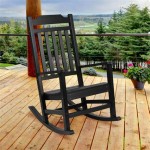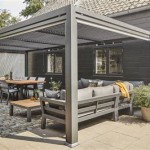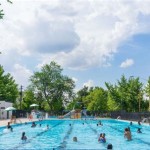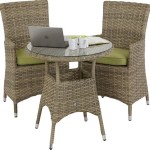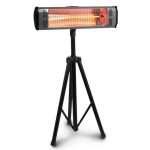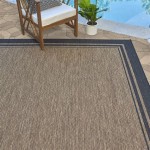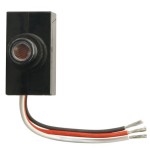Aluminum vs. Wicker: A Comparative Analysis of Outdoor Furniture
Selecting the right outdoor furniture involves careful consideration of various factors, including aesthetics, durability, maintenance requirements, and cost. Among the numerous materials available, aluminum and wicker are two popular choices, each offering distinct advantages and disadvantages. This article provides a comprehensive comparison of aluminum and wicker outdoor furniture, outlining their respective properties and helping consumers make informed decisions based on their specific needs and preferences.
Durability and Weather Resistance
One of the most crucial factors to consider when choosing outdoor furniture is its ability to withstand the elements. Aluminum possesses inherent resistance to rust and corrosion, making it a highly durable option for outdoor use. Powder-coated aluminum frames further enhance their resistance to scratching, chipping, and fading, ensuring long-lasting performance even in harsh weather conditions. This inherent durability translates to a longer lifespan for aluminum furniture, reducing the need for frequent replacements.
Wicker, on the other hand, can be more susceptible to environmental damage depending on the material used. Natural wicker, crafted from materials like rattan, reed, or bamboo, is aesthetically pleasing but not very weather-resistant. Prolonged exposure to moisture can lead to mold, mildew, and decay, significantly reducing its lifespan. Furthermore, direct sunlight can cause natural wicker to become brittle and crack over time.
Synthetic wicker, also known as resin wicker or all-weather wicker, offers a more durable alternative. It is typically made from high-density polyethylene (HDPE) or polyvinyl chloride (PVC), both of which are resistant to water, UV rays, and temperature fluctuations. High-quality synthetic wicker can withstand years of outdoor use with minimal maintenance. However, the quality of synthetic wicker can vary considerably, and lower-quality materials may become brittle or fade over time.
The frame supporting the wicker material also plays a crucial role in its overall durability. Wicker furniture often features aluminum frames, combining the aesthetic appeal of wicker with the structural integrity of aluminum. This combination can offer a good balance of durability and style. Steel frames are sometimes used, but they are prone to rust and therefore require more maintenance.
Maintenance Requirements
Maintenance requirements are another significant consideration when choosing outdoor furniture. Aluminum's inherent resistance to rust and corrosion translates to minimal maintenance. Generally, cleaning aluminum furniture involves simply wiping it down with soap and water to remove dirt and debris. More stubborn stains can be addressed with a mild cleaning solution and a soft brush.
Depending on the type of wicker, maintenance requirements can vary. Natural wicker requires more frequent and meticulous care to prevent damage. Regular cleaning with a damp cloth and mild soap is necessary to remove dirt and prevent mildew growth. Additionally, applying a sealant or varnish can help protect the natural fibers from the elements. During periods of inclement weather, natural wicker furniture should be stored indoors or covered to prevent water damage.
Synthetic wicker requires less maintenance than natural wicker. Regular cleaning with soap and water is typically sufficient to keep it looking its best. Pressure washing can also be used to remove tougher stains, but caution should be exercised to avoid damaging the wicker material. While more durable than natural wicker, synthetic wicker can still benefit from being covered or stored indoors during harsh weather conditions to prolong its lifespan.
Regardless of the material, cushions and fabrics used on outdoor furniture require regular cleaning and maintenance to prevent staining and fading. Removable cushion covers can be machine-washed, while non-removable covers can be spot-cleaned with a mild detergent. Storing cushions indoors during periods of rain and direct sunlight will significantly extend their lifespan.
Style and Design Versatility
Aesthetic appeal is a crucial factor for many consumers when selecting outdoor furniture. Both aluminum and wicker offer a range of styles and designs to complement various outdoor spaces.
Aluminum furniture can be molded into various shapes and designs, offering a sleek and modern aesthetic. The powder-coating process allows for a wide range of color options, allowing consumers to customize their furniture to match their existing décor. Aluminum furniture is often chosen for its clean lines and minimalist design, making it suitable for contemporary outdoor settings.
Wicker furniture offers a more traditional and rustic aesthetic. The woven texture of wicker adds visual interest and warmth to outdoor spaces. With natural wicker bringing a classic, organic feel, while synthetic wicker may offer a more modern interpretation.
The combination of aluminum frames with wicker weaving provides a versatile design option that balances durability with visual appeal. These designs often feature intricate weaving patterns and comfortable seating arrangements, making them suitable for both casual and formal outdoor settings. The wide range of available colors and styles ensures that consumers can find wicker furniture that complements their personal taste and existing décor.
Ultimately, the choice between aluminum and wicker furniture often comes down to personal preference and the desired aesthetic. Consumers should consider the overall style of their outdoor space and choose furniture that complements it harmoniously.
Cost Considerations
The cost of outdoor furniture can vary significantly depending on the materials used, the quality of construction, and the brand. Generally, aluminum furniture is priced competitively, offering a good balance of durability and affordability. Powder-coated aluminum furniture tends to be slightly more expensive than unfinished aluminum furniture, but the added protection against the elements justifies the higher cost.
Natural wicker furniture tends to be more expensive than synthetic wicker furniture due to the higher cost of raw materials and the more labor-intensive manufacturing process. The limited weather resistance of natural wicker may also necessitate more frequent replacements, increasing the overall cost of ownership over time.
Synthetic wicker furniture offers a more affordable alternative to natural wicker. The cost of synthetic wicker can vary depending on the quality of the material and the complexity of the weaving pattern. High-quality synthetic wicker furniture can be a worthwhile investment, offering long-lasting durability and aesthetic appeal at a reasonable price.
It is essential to consider the long-term cost of ownership when comparing aluminum and wicker furniture. While natural wicker may be initially appealing due to its aesthetic qualities, the higher maintenance requirements and shorter lifespan can make it a less cost-effective option in the long run. Aluminum and high-quality synthetic wicker furniture offer a better value proposition, providing years of enjoyment with minimal maintenance.
Weight and Portability
The weight of outdoor furniture can be an important consideration, especially for individuals who frequently rearrange their outdoor spaces or need to store furniture during the off-season. Aluminum is a lightweight material, making aluminum furniture easy to move and transport. This is particularly advantageous for individuals who have limited strength or mobility.
Wicker furniture can vary in weight depending on the materials used and the construction method. Natural wicker furniture tends to be lighter than synthetic wicker furniture, due to the lighter weight of the natural fibers. However, both natural and synthetic wicker furniture are generally lighter than wrought iron or steel furniture.
The frame supporting the wicker material also contributes to the overall weight of the furniture. Wicker furniture with aluminum frames is typically lighter than wicker furniture with steel frames. This makes it easier to move and rearrange wicker furniture with aluminum frames.
The portability of outdoor furniture can also be a factor for individuals who live in apartments or condominiums with limited storage space. Lightweight furniture can be easily disassembled and stored during the off-season, freeing up valuable space.
Environmental Considerations
Increasingly, consumers are considering the environmental impact of their purchasing decisions. Both aluminum and wicker have environmental implications that should be considered.
Aluminum is a highly recyclable material, and recycled aluminum requires significantly less energy to produce than virgin aluminum. This makes aluminum a relatively sustainable choice for outdoor furniture. However, the production of virgin aluminum is energy-intensive and can contribute to greenhouse gas emissions. Consumers can minimize the environmental impact of aluminum furniture by choosing products made from recycled aluminum.
The environmental impact of wicker furniture depends largely on the materials used. Natural wicker, if harvested sustainably, can be a renewable and biodegradable resource. However, unsustainable harvesting practices can lead to deforestation and habitat loss. Ensuring the natural wicker furniture is FSC certified ensures the materials has been sourced from a responsibly managed forest.
Synthetic wicker is made from petroleum-based products, such as HDPE and PVC. The production of these materials contributes to greenhouse gas emissions and can generate harmful waste. However, some manufacturers are using recycled plastics to produce synthetic wicker, reducing the environmental impact. Consumers can minimize the environmental impact of synthetic wicker furniture by choosing products made from recycled materials and ensuring the furniture is recyclable at the end of its lifespan.

Wicker Vs Aluminum The Right Choice For Patio Furniture

A Guide To Choosing Between Wicker Aluminum Furniture

Wicker Vs Aluminum Best For Summerville Patios

Resin Wicker Vs Metal Patio Furniture Pros And Cons

Aluminum Vs Wicker Which Patio Furniture Material Is Right For You

Wood Vs Aluminum Wicker Pros And Cons Of Different Types Patio Furniture Patioliving

Wicker Vs Aluminum Material For Patio Furniture

Aluminum Vs Wood Which Is Best For Your Patio Furniture

Benefits Of Aluminum Patio Furniture Durability And Style

Patio Furniture Materials Pros Cons And Tips For Choosing

